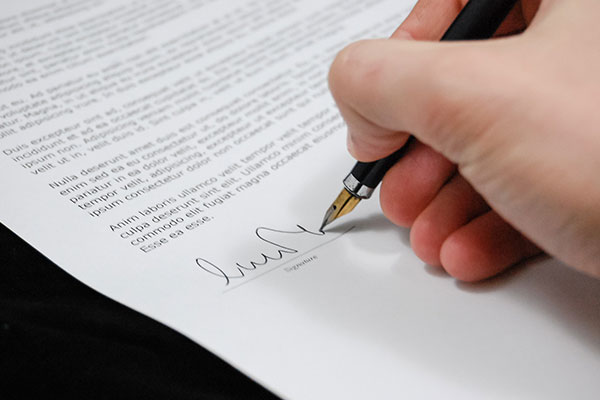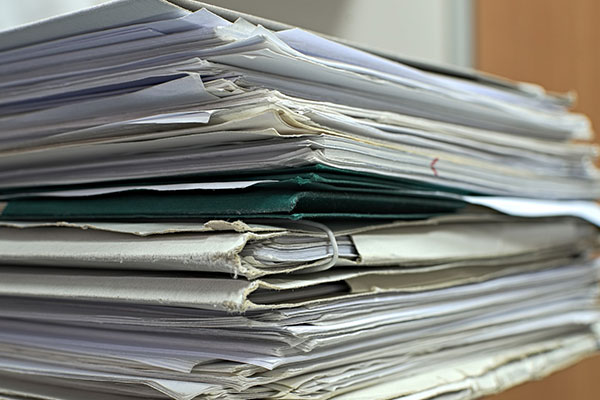ISO 9001 Documentation

A complete guide for iso 9001 documentation
The most challenging part of implementing ISO 9001 compliant QMS is its documentation.
One of the main reasons why documentation is considered to be difficult is because of the complicated technical requirements of the ISO 9001 standard.
Many people find it hard to understand, interpret and apply it to their organisation. Additionally, as these documents hold a lot of relevance, getting these documents right can seem overwhelming to some, as documentation directly impacts the business operations.
It is critical that you customise your ISO documentation, adapting it to the needs and circumstances of your business. It is futile to copy somebody else’s procedures without altering them to your unique needs. To achieve the benefits of the QMS, customisation is critical.
If you plan to outsource your certification process to a consultant, allow them first to become sufficiently familiar with the way your business operates, before they start writing your documentation. Alternatively, if you plan to utilise QMS templates, focus on the flexibility and the customisation instructions.
But why should documentation be so important? In the following, we will learn about the importance of ISO 9001 documentation.
Importance of documents
The purpose of documentation controls in QMS is that it includes core measures that have been put in place in your organisation.
These documented measures ensure governance over the access, addition, or alteration of the content.
As per the requirements in ISO 9001:2015, the mandate dictates that “control over documented information” is necessary to ensure that only the authorised people maintain access to the Quality Management System (QMS).
It also ensures that unauthorised changes are not made to the documents.
Additionally, creating documentation controls also ensures that a company has continued access to recent updates made to their procedures and policies, allowing them to operate on correct instructions.
Critical considerations about document control:
To ensure that only the authorised individuals maintain access to the documents, there are specific vital considerations that you need to remember:
- There should be a separate and secure location to store all documents.
- Records of document creation should be maintained.
- Delegation of authority should be made to a person who will be responsible for the distribution of documents to appropriate parties.
- I was noting the life-cycle of documents.
- A list of relevant and applicable permissions.
- Protection strategy for preserving documents from destruction.
- Retrieval plan for documents that are accidentally destroyed.
- Security maintenance plan for documents.
- Protocol for determining authenticity and validity of documents.
- Protocol for determining the version control.
Which documents do I need?
Although, ISO 9001 is less prescriptive regarding the number of documents required, there are certain documents that are necessary. These include:
- Quality policy
- Quality objectives
- Scope statement
- Procedures
- Process maps
- Work instructions
- Forms
The standard outlines specific requirements for the quality policy, objectives and scope, but a lot of flexibility is granted to the number and content of procedures, forms, work instructions and process maps.
We recommend you to not be stringent with the number of procedures that you create. The standard recommends you to create procedures by combining or splitting up ISO 9001 clauses to suit the individual circumstance of your business.
In addition to creating high-level procedures, you need to create detailed steps that describe how these procedures are performed by creating work instructions. Work instructions will be discussed later in this article.
Forms and checklists are not explicitly mentioned within the standard, however, they are considered to be a part of the work instructions.
Creating forms and checklists are beneficial as they save both time and effort needed to meet the requirements of ISO 9001. In the following, we will talk about the most important documents that you must have.
Procedures
One can say that the essence of ISO 9001 documentation is its procedures.
The standard explicitly describes how numerous processes within an organisation must be performed and delegates authority to responsible people.
In an ideal situation, all procedures should be combined in a procedure manual or a quality management manual, which can be defined as a single, user-friendly, explanatory document.
The ISO 9001:2015 standard outlines the requirements for the procedures and their content in many clauses, even though the requirements are not explicitly explained.
It is highly recommended to create procedures to address all applicable requirements of ISO 9001:2015.In the next part, we examine the nature of ISO 9001 quality documents and policies.
Quality policy
The quality policy defines an organisation’s stance regarding quality and customer satisfaction. The ISO 9001 standard states that a quality policy is the overall guiding principle for an organisation.
In order to meet compliance, an organisation’s quality policy must meet the requirements of section 5.2.2 of ISO 9001:2015.
Quality objectives
The quality policy of an organisation is materialised through its quality objectives. Quality objectives are actionable steps that a organisation utilises to achieve the targets outlined in the quality policy.
Process flow chart
The process flowchart is a graphical/pictorial representation of how various processes within the QMS interact with each other. The recommendations for a process flowchart are outlined in section 4.4 of the ISO 9001:2015 standard.
Scope statement
The scope statement defines the application and the boundaries of an organisation’s quality management system. The recommendations for the scope statement are outlined in section 4.3 of ISO 9001:2015.
Work instructions
Work instructions can be described as the most detailed and organisation-specific of all ISO 9001 documents. The purpose of work instructions is to describe in detail, how particular tasks must be performed.
They are typically written by individuals who perform the actual tasks. It is a common misconception that every task within the organisation needs to be documented, however, the ISO 9001:2015 standard only requires work instructions where they add ‘real value’ to the company.
The recommendations regarding work instructions are outlined in section 8.5.1 in ISO 9001:2015.
Records
Records are different from all the documents mentioned above, as all of the above documents focus on providing directions on conducting business.
Records, on the other hand, serve as evidence of tasks that have been done. The ISO 9001:2015 standard contains numerous explicit instructions on record maintenance.
Forms are optional
The ISO 9001:2015 standard does not contain any specific requirements on using forms. In fact, if an organisation does not have any forms, it would not be considered a violation of ISO 9001:2015 requirements.
Having said that, forms provide many benefits to any business, specially if they are appropriately used. Examples of such benefits include cost saving, time saving and consistency. Additionally, some forms even act as instructional guides when the user is in the process of learning and acquiring new information.
Purpose of the quality manual?
The previous versions of ISO 9001 required an organisation to create a quality manual, a document that contained the overall description of the QMS. However, the ISO 9001:2015 standard no longer requires such a manual.
Yet, many organisations choose to develop a quality manual for marketing purposes and as a guide for interested parties who wish to learn about the QMS, without compromising essential propriety processes.
Document creation for ISO 9001
Your ISO documents need to be a perfect fit for your business. They cannot be written by someone who is unfamiliar with the manner in which your company operates.
In fact, even a company insider with years of experience should not do it without taking inputs from others. Larger companies have a multi-functional team, that creates their high level documents.
If you work for a mid-sized or a smaller business, you can develop your procedures by using supporting forms. However, it is necessary to obtain staff information to support your procedures. The process is as follows:
- Study the requirements and the generally accepted interpretations, but tackle one clause at a time.
- Determine which organisational functions are being impacted by these procedures.
- Conduct a gap analysis and establish the current level of compliance.
- Describe the requirements that are needed to close these gaps and discuss possible ways in which the requirements can be adapted by the management.
- Once a consensus is reached on optimal pricing, begin formalising the document in writing.
In the following, we will get to know the requirements of documentation in detail.
Documentation requirements
When reviewing the requirements for QMS documentation, it is beneficial to pay attention to the requirements for the documents that are needed in production and service processes.
A method is needed to identify what processes must be documented, as documenting all the processes within an organisation will create frivolous amount of documents. Moreover, it is essential to remember that as new processes are added to your organisation in the future, you will require a method of identifying when documentation is needed, and when it is not. Similarly, the same holds true for new products or services.
As a part of control, it is necessary to set guidelines for identifying processes that need documentation during the implementation of the QMS.
The processes that are documented and identified should be approved by the top management. After implementation, include the requirements for identification of documents as a part of your quality planning for new processes, products, services or changes.
In the following, we will get acquainted with the most important mandatory documents to obtain ISO 9001.
The mandatory records are needed for ISO 9001 include
- Monitoring and measuring resources, as per clause 7.1.5.1
- Monitoring and measuring equipment calibration records, as per clause 7.1.5.2
- Records of staff competency, as per clause 7.2
- Records of product/service requirements review, as per clause 8.2.3.2
- Design and development input records, as per clause 8.3.3
- Record of design and development controls, as per clause 8.3.4
- Records of design and development outputs, as per clause 8.3.5
- Records of design and development changes, as per clause 8.3.6
- Criteria for evaluation and selection of suppliers, as per clause 8.4.1
- Characteristics of product or service to be provided, as per clause 8.5.1
- Identification and traceability records, as per clause 8.5.2
- Records about customer preferences including changes, as per clause 8.5.3
- Production/service provision change control records, as per clause 8.5.6
- Release of products and services, as per clause 8.6
- Control of non-conforming outputs, as per clause 8.7.2
- Monitoring and measurement results, as per clause 9.1.1
- Internal audit results, as per clause 9.2.2
- Results of the management review, as per clause 9.3.3
- Results of corrective actions including opportunities for improvement, as per clause 10. 2.2
These are the mandatory clauses that you will need to provide documentation for, in order to become ISO 9001 complaint. Your documents and records may exist in a variety of formats such as spreadsheets, videos, diagrams and even written content.
The ISO 9001 standard requires you to have a system in place that controls your documentation.
It is also important to remember that you need to create retention policies to establish the length of time that these records will exist.
Non-mandatory requirements- but often included
- Procedure for determining the context of an organisation and its interested parties.
- Procedure for identifying and addressing risks and opportunities.
- Procedure for measuring competence within the organisation, training levels and awareness.
- Procedure for measuring equipment maintenance.
- Procedure for documentation and record control.
- Sales procedure.
- Protocol for design and development.
- Procedure for production and service provision.
- Procedure for storage and warehousing.
- Procedure for managing nonconformities with corrective actions.
- Procedure for monitoring and measuring customer satisfaction.
- Protocols for internal audits.
- Protocols for management reviews.
After going through the above list, you might be thinking that ISO 9001 requires a lot of paperwork.
However, the actual amount of paperwork differs with each organisation, as every company is unique and is run differently.
Having this certification allows other companies and people to know that the procedures of your company have passed an international standard of quality.
The certificate not only benefits your consumers, but also benefits the company itself.
In order to be able to prepare the documents well, we must follow some small points.
Documentation tips
The standard is not prescriptive or restrictive about any specific format, structure or numbering system. Organisations have the liberty to choose what works best for them. When creating the documents, consider following these tips:
- DO look for the simplest and easiest method to meet a requirement, going on to adapt it to your business.
- DO utilise your company’s unique vernacular and avoid using “ISO language.”
- DO use illustrations and diagrams instead of long-winded text.
- DO use a layout that is visually appealing and easy to understand.
- DON’ T include references to other documents as it is time consuming.
- DON’T include bureaucratic requirements or requirements that are not applicable to your company’s circumstances or culture. Adding unnecessary requirements will hinder your business operations and productivity.
But in what format should we provide the documents?
Format and content of ISO 9001
Even though the ISO 9001:2015 standard has many instructions regarding the content of the above mentioned documents, there are many things that ISO 9001:2015 does NOT require, for example:
- It does not need any specific format or layout.
- Referencing for every document and form is not needed.
- Specifications regarding introductory paragraph are not provided.
- And lastly, there is certainly no requirement stating that the documentation needs to be complex and hard to understand.
The aim of the standard documentation is to provide instructions on how to operate your company’s ISO 9001 quality management system.
Hence, the best way to maintain documentation is to focus on ease of understanding and making it user-friendly. This is because, the easier the documentation, the better it is to follow.
Many companies make the mistake of creating numerous documents and referencing each one
of them, they are leading to the loss of pertinent information or the creation of surplus information. This approach creates redundancies. Additionally, such a document may be valid for bureaucratic information, but is far from being user-friendly and is not helpful in the implementation of the QMS.
We recommend you to create user-friendly ISO 9001 documentation by combining different documentation procedures, namely, process flowchart, scope, quality policy and procedures into a single comprehensive manual. This manual can be titled as ISO 9001 QMS manual, or a procedure manual, or a quality management manual. The advantage of combining everything in a single document is that, it reduces repetition and bureaucracy, saves time and increases the efficiency of implementing the QMS.
A good document is always created by keeping the user/reader in mind. It is important to remember that many users like the instructions in the form of flowchart or pictures. Immensely few people enjoy reading long passages of convoluted text.
If you don’t know where to start to prepare the documents, we will explain these things in full below.
Where to start?
The requirements of document control are explained in clause 7.5 of the standard. This clause also explains how to write, identify and approve documents.
Reading this clause is ideal before addressing the remaining requirements. Additionally, whenever you encounter record keeping requirements, consider if a form or a checklist would be helpful, instead of long passages of text.
A word of caution
If you choose to utilise templates for your ISO 9001 documentation, always look at the samples before using them. If the samples are simply complicated and strict or hard to understand, they will be of little use to your organisation and your employees.
Remember, if an ISO consultant insists on writing documentation in a highly complicated manner, chances are, that this documentation will become useless or a burden for your company.
We are here to help you
You can fully implement the documentation process using our services and expert advice. We are just a call away.
We will to guide you to manage your documents in the most systematic, efficient and sustainable manner, allowing you to not only clear your certification audit, but remain viable for the consequent surveillance and recertification audits.
FAQ
Frequently asked questions about preparing ISO 9001 documents
- Control of Documents. It’s essential to maintain efficient communication for a seamless business operation. …
- Control of Records. …
- Internal Audit. …
- Control of Non-conforming Products. …
- Corrective Action. …
- Preventive Action.
There are many tips for preparing ISO 9001 documentation. On this page, you can read the full details of ISO 9001 document preparation.
























